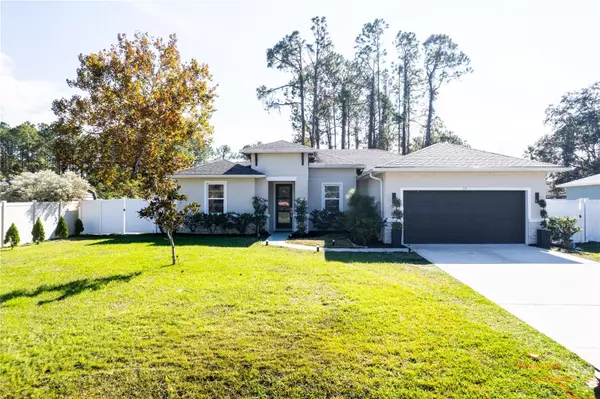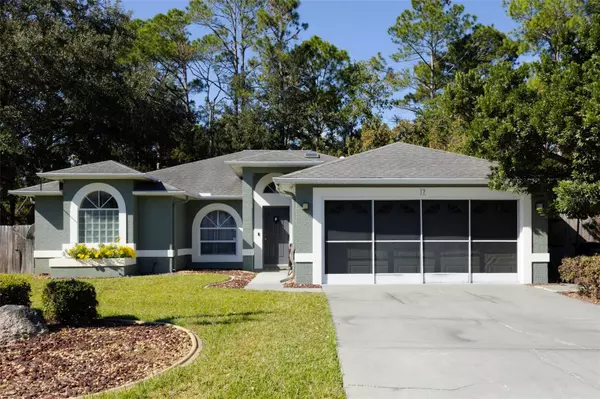- Any
- $ 100,000
- $ 150,000
- $ 200,000
- $ 400,000
- $ 800,000
- Any
- $ 200,000
- $ 300,000
- $ 400,000
- $ 600,000
- $ 1,000,000
- List
- Mixed
- Map
20 Properties Available
- Default
- Price-High To Low
- Price-Low To High
- Newest Listings
- Beds (Most)
- Baths (Most)
- Year Built (Newest)
- Square Feet (Biggest)
$274,999
81 PARKWAY DR, Palm Coast, FL 32164
Listed by Brett Beckner TRADEMARK REALTY GROUP LLC

$389,900
74 PLAIN VIEW DR, Palm Coast, FL 32164
Listed by Melissa White COLDWELL BANKER PREMIER

$350,000
55 PALMWOOD DR, Palm Coast, FL 32164
Listed by Denise Fernandes EXP REALTY LLC

$315,000
17 PERTHSHIRE LN, Palm Coast, FL 32164
Listed by Elena Dimitrova COASTAL REALTY PROS LLC

$299,000
75 PERTHSHIRE LN, Palm Coast, FL 32164
Listed by Sarah Amarasinghe JASON MITCHELL REAL ESTATE FLO

$339,900
116 PEPPERDINE DR, Palm Coast, FL 32164
Listed by Amanda Johnston WEICHERT REALTORS HALLMARK

$329,999
57 PARKWAY DR, Palm Coast, FL 32164
Listed by Tara Morrow HERRON REAL ESTATE LLC

$310,000
41 PERSHING LN, Palm Coast, FL 32164
Listed by Noah Bailey KELLER WILLIAMS REALTY ATLANTIC PARTNERS (ST. AUG)

$428,999
155 PLAIN VIEW DR #A&B, Palm Coast, FL 32164
Listed by ZINAIDA BARRA FLORIDA DREAMS PROPERTIES INC

$310,000
203 PALMWOOD DR, Palm Coast, FL 32164
Listed by Taner Banks KELLER WILLIAMS RLTY FL. PARTN

$280,000
66 PEBBLE BEACH DR, Palm Coast, FL 32164
Listed by Ann Gordon RE/MAX SELECT PROFESSIONALS

$295,000
6 PATCHOGUE PL, Palm Coast, FL 32164
Listed by Mary Capela RE/MAX SELECT PROFESSIONALS

$2,050
116 PEPPERDINE DR, Palm Coast, FL 32164
Listed by Tina Mullins WEICHERT REALTORS HALLMARK

$2,200
12 PATTON PL, Palm Coast, FL 32164
Listed by M. Gina DosSantos LIVIN PARADISE REALTY LLC

$343,000
35 PUTTER DR, Palm Coast, FL 32164
Listed by DIRK SCHROEDER CENTURY 21 ST. AUGUSTINE PROPERTIES

$374,900
27 PALMER LN, Palm Coast, FL 32164
Listed by Gayle Freel ESTELA REALTY LLC

$438,000
61 PUTTER DR, Palm Coast, FL 32164
Listed by EZRA MARCUS EZRA MARCUS, REALTOR

$72,000
192 PERSIMMON DR, Palm Coast, FL 32164
Listed by Ginger Ownby JIM OWNBY REALTY, INC.

MY BLOGS

9 Tips for Buying & Selling Your Home at the Same Time
9 Tips for Buying & Selling Your Home at the Same Time
9 Tips for Buying & Selling Your Home at the Same Time 9 min read Selling your home when you still need to shop for a new one can feel daunting to even the most seasoned homeowner––especially when the demand for new homes keeps rising, but the supply feels like it’s dwindling.¹ You’re not alone ei
MORE
6 Strategies to Save on Home Insurance Premiums
6 Strategies to Save on Home Insurance Premiums
6 Strategies to Save on Home Insurance Premiums From wildfires to floods, the past few years have brought a historic number of devastating climate and weather events to the United States. In 2023 alone, there were 28 individual weather-related disasters that caused at least $1 billion in damages e
MORE
Downsize Your Home, Rightsize Your Life: How to Choose the Ideal Smaller Home
Downsize Your Home, Rightsize Your Life: How to Choose the Ideal Smaller Home
Downsize Your Home, Rightsize Your Life: How to Choose the Ideal Smaller Home 9 min read When you've lived somewhere for many years, it can be tough to say goodbye. But if you (or a loved one) currently have a home that is bigger than necessary or is too high maintenance, it may be time to trade unu
MORE





















